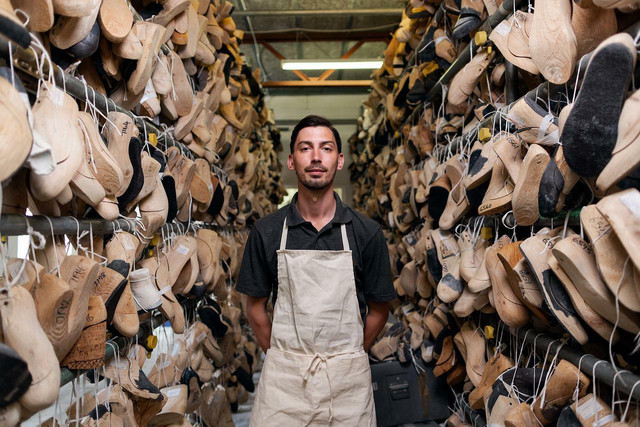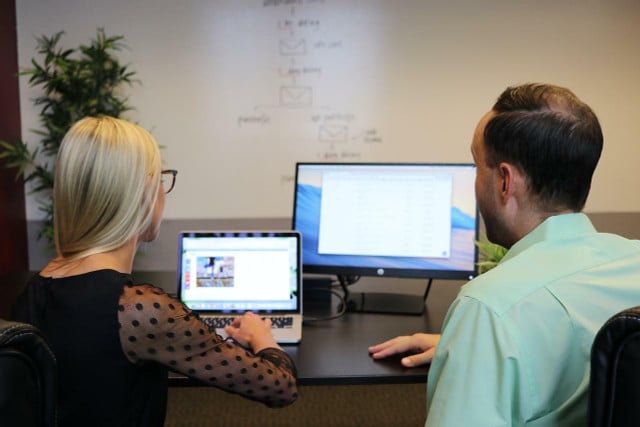Sustainable businesses are a great way to turn a profit while contributing to society. It takes perseverance and dedication but creating a sustainable company can be very rewarding.
The sustainability market is growing exponentially. The latest data estimates that by 2030, the sustainability sector will be worth over 417 billion dollars. Many companies are considering a greener approach, from food to technology, clothing to medical care. There are both financial and ethical motives for following this trend.
A study concluded that many people have begun to reconsider consumer choices since the pandemic. In the food industry, for instance, public opinion has shifted against imported products in favor of more regional and environmentally-friendly products. Likewise, the US government recently published one of the most ambitious environmental agendas, pushing local governments and businesses to make more significant changes toward sustainable outcomes.
With a growing demand for sustainable products, it’s no surprise that new entrepreneurs are paying close attention to the sustainable business world. But what exactly is a sustainable business? And, how can you start one?
What Is a Sustainable Business?

Sustainability in business can mean a lot of things to different people. It can concern production, operations, and business policy. But, the bottom line is about minimizing an enterprise’s negative impact on the environment and society — this should be the top consideration in everything sustainable businesses do.
One way of thinking about how to achieve this is the service or product lifecycle. A product life cycle is a timeline between when a product is made, right through to how it is disposed of after a consumer has used it. It can be thought of in six stages:
- Extraction of the raw materials needed to create the product.
- Manufacturing the materials into a usable product.
- Transporting the product from the manufacturer to the retailer.
- Distributing the product from the retailer to the customer.
- Use of the product by the end consumer.
- End of life for the product and how it is disposed of.
In an ideal scenario, a sustainable company will consider the environmental implications of its business at each stage of this cycle. We’ll break this down into the primary considerations you need to make as you create your sustainable business model.
1. Research



The first step in creating any sustainable business is finding the answer to a customer’s problem. Is there an alternative to the current way of doing things? Or, can you think of something completely new that would solve a problem more efficiently? Whatever problem you hope to solve, you’ll need three things:
- an audience who is interested in the idea
- the skill set to deliver the idea
- a way that you can add new value to the market
You’ll need to research these three areas to determine if your idea is going to be viable. Many people are interested in sustainability but aren’t able to access the products or services they want. You have to ask yourself why they can’t access them and whether you can fix this problem. Your idea doesn’t have to be original, but it will need to add value in some way.
This might sound intimidating, but adding value is actually your greatest resource because it can become a unique selling point for your business. When you’ve defined your unique selling point, then you need to start refining your idea.
2. Planning



You can use this step to help develop your sustainable companies. Start by asking yourself these questions:
Why am I starting this business?
This is a good starting point for taking a realistic look at your idea. You want to be inspired and motivated to bring your vision to fruition.
What is my product or service?
Clearly define what your product or service is supposed to achieve and how you intend to achieve it.
Who is my target customer?
Market research is a crucial part of planning any business. It might be helpful to create a customer profile. This is a snapshot of who your ideal customer will be. You can look at similar companies to yours to find out what kind of customers buy from them and how they buy from them. It should include:
- Demographics: Who they are, where they are from, gender, age, etc
- Buying behavior: Do they buy online or in person? Do they shop on social media, or do they prefer email?
- Challenges: What problems do they have, and how can your business solve them?
- Buying journey: What steps will the customer have to take to reach your product? Can you make it easier for them?
How will I incorporate sustainability into my business model?
Lastly, but perhaps most important, is to think about how you will make your business sustainable. This can be done in many ways, for instance, with sustainable:
- products and materials
- supply chains
- manufacturing
- delivery
- community outreach
You can also consider ways for your company to minimize damage overall. A great example of this is the waste hierarchy. The EPA offers a list of the most to least preferable ways to mitigate environmental damage (in order of most to least desirable):
- Reduce or reuse
- Recycle or compost
- Recover
- Treat and disposal
If you can aim to change at least one aspect of your business model, it can go a long way towards supporting sustainable goals. When you have all these points in mind, it’s time to think about implementation.
3. Products and Sourcing



How you source your product can help to define and differentiate your brand. By looking at sustainable alternatives to everyday products or services, you can gain easy access to the sustainable market. You might ask:
- Could I use sustainable packaging?
- Can I use recycled or recyclable materials?
- How can I cut down on transportation? I.e., can the materials be sourced locally? Are there more sustainable modes of delivery?
- Do I need to have a physical inventory? I.e., can it be digital? Can I reduce my inventory numbers to reduce energy expenditure?
- Can I buy from an ethical supplier?
If you cannot make accommodations on how your product is sourced or manufactured, you might consider an offsetting model. Offsetting is when you invest a certain fraction of your profits towards green or sustainable initiatives. These are programs that carry out environmental work on your behalf. Usually, the goal will be to balance the adverse effects of business outputs, such as carbon. Several companies offer this service in the US:
These sustainable companies are a great way to demonstrate to customers that you are committed to ethical business practices. And to help you meet your own sustainability targets.
4. Branding and Marketing



Your brand is the identity that helps customers recognize you. It can include your name, logo, slogan, and other visuals. But, it is also about what makes you unique as a business, such as your values, personality, and beliefs. You want to reach a harmony between who you are as a brand and what your customer needs and build yourself up front there. Will you have a website or physical store? Where will you be present – think social media and blogs.
When you have a clear idea about who you are and what you stand for, it’s much easier to market yourself. Your marketing approach will also rely on your customer profile. Certain age groups and demographics are more likely to buy particular products over others. You need to understand your customer well enough to know:
- Where they shop
- How they shop
- When they shop
Delivering your marketing strategy to fit your brand image will also be important. For instance, a green company would not advocate for consumers to buy non-green products. You have to think about it in terms of association. This will help you to define a better marketing approach. For example, some ways to market a sustainable business might be:
- To post on environmental forums and groups.
- To give flyers to your local whole foods store or farmers market.
- Approaching eco-friendly blogs and online businesses that might host or link to your site.
- Writing blogs or articles on popular environmental topics.
- Creating eco-friendly content on social media.
- Providing educational content on sustainability.
- Advertising in an environmental magazine.
- Listing your product or service on an ethical marketing place.
- Joining events or public talks on sustainability.
- Ask environmental public speakers or influencers to review your product.
- Review or collaborate with other popular eco-friendly products or services.
These are just ideas that you can try to get your product to the right place and the right people. You’ll need to experiment to find the right tactics for your sustainable businesses.
Conclusion – Staying Sustainable
Sustainable businesses are difficult to create. But keeping sustainable is the real challenge. Set realistic and verifiable goals to meet your company’s sustainability targets. It’s important to review your progress at regular intervals. If you haven’t met your target, why not? And, how can you do better?
Sustainability isn’t just a marketing ploy. It has real-world ethical and environmental outcomes. By incorporating a few of these considerations, you can take one step towards helping the world become a better place.
Read on:
- What is Sustainable Development and Why Is It Necessary?
- 5 Free Online Courses: Make the Most of Your Time at Home
- 4 Day Work Week & Companies That Lead by Example
Do you like this post?








